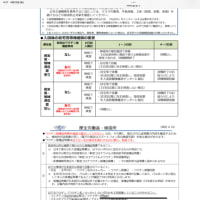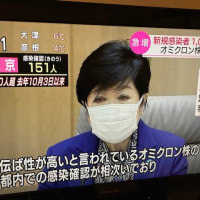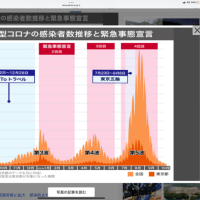春先からアメリカで急速に拡大中の新型コロナウイルスがフラート、今ままで流行った、各種株より感染力が強いと報告されいますが、
パリ五輪で更に拡大されるのではと思っています
There's a new COVID-19 variant called FLiRT: Here's what you need to know about it
07May2024|USA Today紙から
A new set of COVID-19 variants, nicknamed FLiRT, has been detected in wastewater surveillance, according to data from the Centers for Disease Control and Prevention.
From April 14 through April 27, the variant, labeled KP.2, makes up about 25% of the cases in the United States, according to the CDC. That makes it the new dominant variant in the country, overtaking JN.1. The JN.1 variant, which spread globally over the winter, made up 22% of COVID-19 cases in the U.S. in the same two-week span.
KP.1.1, another FLiRT variant that is circulating, made up about 7.5% of COVID-19 cases in that two-week span, according to CDC data.
Read for new info on COVID FLIRT:It is now the dominant variant. Could there be a summer surge?
Megan L. Ranney, dean of the Yale School of Public Health, told WebMD that FLiRT has some concerning features, like changes in the spike protein, which play a role in helping SARS-CoV-2 colonize the body and make people sick.
According to the CDC, only 22.6% of adults reported having received an updated 2023-24 COVID-19 vaccine since September 2023. Data also shows that vaccination coverage increased by age and was highest among adults 75 and older.
“We’ve got a population of people with waning immunity, which increases our susceptibility to a wave,” Thomas A. Russo, chief of infectious disease at the Jacobs School of Medicine and Biomedical Sciences at the University of Buffalo, told WebMD.
"The CDC is tracking SARS-CoV-2 variants KP.2 and KP.1.1, sometimes referred to as 'FLiRT,' and working to better understand their potential impact on public health," the agency said in an emailed statement to USA TODAY Wednesday.
"Currently, KP.2 is the dominant variant in the United States, but laboratory testing data indicate low levels of SARS-CoV-2 transmission overall at this time. That means that while KP.2 is proportionally the most predominant variant, it is not causing an increase in infections as transmission of SARS-CoV-2 is low," the CDC said in the statement.
Symptoms of COVID 'FLiRT' variant
According to the CDC, there are "no current indicators" that KP.2 would cause more severe illness than other strains. The agency said it would continue to monitor community transmission of the virus and how vaccines perform against this strain.
The "FLiRT" variant reportedly has similar symptoms to those from JN.1 which include:
- Fever or chills
- Cough
- Sore throat
- Congestion or runny nose
- Headache
- Muscle aches
- Difficulty breathing
- Fatigue
- New loss of taste or smell
- "Brain fog" (feeling less wakeful and aware)
- Gastrointestinal symptoms (upset stomach, mild diarrhea, vomiting)
The CDC notes that the list does not include all possible symptoms and that symptoms may change with new variants and can vary by person.
In general, the agency says, people with COVID-19 have a wide range of symptoms, ranging from mild to severe illness. Symptoms may appear two to 14 days after exposure.
Latest COVID guidance from the CDC
In March 2024, the CDC updated its COVID-19 guidance so people who test positive for the virus will no longer be directed to isolate at home for five days.
Health officials announced a new policy focusing on actions people can take to reduce spreading a variety of common respiratory viruses, such as influenza, respiratory syncytial virus (RSV) and COVID-19. Those actions include staying home when sick, staying up to date with vaccines, practicing good hygiene and improving indoor air quality.
The change marked the first time the agency has revised its coronavirus guidelines since 2021. It is intended for people and employers, not for hospitals or nursing homes that have separate guidance, the CDC said.
CDC officials called the change a streamlined approach that’s easier for people to understand and more in line with circulating respiratory viruses that spread the same way and have similar symptoms.
Contributing: Eduardo Cuevas, Adrianna Rodriguez, Ken Alltucker, Mary Walrath-Holdridge and Mike Snider



























※コメント投稿者のブログIDはブログ作成者のみに通知されます